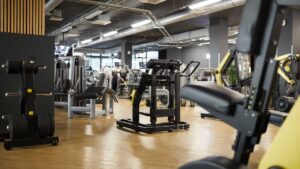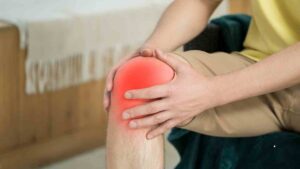Benefits of Exercise for Students: In today’s fast-paced world, where academic pressure and digital distractions are at an all-time high, students often find themselves struggling to maintain a healthy balance between their studies and personal well-being. One of the most effective ways to achieve this balance is through regular exercise. Exercise is not just about physical fitness; it encompasses mental, emotional, and social well-being. For students, incorporating exercise into their daily routine can have a profound impact on their overall development. This article will explore the numerous benefits of exercise for students, focusing on how it can enhance their academic performance, mental health, physical health, and social skills.
1. Improves Academic Performance
One of the most significant benefits of exercise for students is its positive impact on academic performance. Research has shown that students who engage in regular physical activity tend to perform better in school compared to their sedentary peers. Here’s how exercise contributes to academic success:
- Enhances Cognitive Function: Exercise increases blood flow to the brain, which helps improve cognitive functions such as memory, attention, and problem-solving skills. This is particularly beneficial for students who need to retain large amounts of information for exams.
- Boosts Concentration: Physical activity has been shown to improve concentration and focus. Students who exercise regularly are better able to pay attention in class and stay focused on their studies for longer periods.
- Reduces Stress: Exercise is a natural stress reliever. It helps reduce levels of cortisol, the stress hormone, and increases the production of endorphins, which are known as “feel-good” hormones. Lower stress levels can lead to better academic performance, as students are less likely to feel overwhelmed by their workload.
- Improves Sleep Quality: Regular exercise can help students fall asleep faster and enjoy deeper, more restorative sleep. Better sleep quality is directly linked to improved academic performance, as it allows the brain to consolidate information learned during the day.
2. Enhances Mental Health
Mental health is a critical aspect of a student’s overall well-being, and exercise plays a vital role in maintaining it. The pressures of academic life, coupled with the challenges of adolescence, can take a toll on a student’s mental health. Here’s how exercise can help:
- Reduces Anxiety and Depression: Exercise has been proven to be an effective way to reduce symptoms of anxiety and depression. Physical activity stimulates the release of endorphins, which can help improve mood and reduce feelings of sadness or anxiety.
- Boosts Self-Esteem: Regular exercise can help students feel better about themselves. Achieving fitness goals, whether it’s running a certain distance or lifting a certain weight, can boost self-confidence and self-esteem.
- Provides a Healthy Outlet for Stress: Exercise provides a healthy way to cope with stress. Instead of turning to unhealthy habits like overeating or substance abuse, students can use physical activity as a way to manage their stress.
- Improves Emotional Resilience: Exercise can help students build emotional resilience, which is the ability to bounce back from setbacks. This is particularly important for students who may face academic challenges or personal difficulties.
3. Promotes Physical Health
While the mental and academic benefits of exercise are significant, the physical benefits cannot be overlooked. Regular physical activity is essential for maintaining a healthy body, which in turn supports overall well-being. Here are some of the key physical benefits of exercise for students:
- Maintains a Healthy Weight: With the rise of sedentary lifestyles and unhealthy eating habits, obesity among students is becoming a growing concern. Regular exercise helps burn calories and maintain a healthy weight, reducing the risk of obesity-related health issues.
- Strengthens Muscles and Bones: Exercise, particularly weight-bearing activities like running, jumping, and strength training, helps build and maintain strong muscles and bones. This is especially important during the growing years, as it can help prevent conditions like osteoporosis later in life.
- Improves Cardiovascular Health: Regular aerobic exercise, such as running, swimming, or cycling, strengthens the heart and improves cardiovascular health. This reduces the risk of heart disease, high blood pressure, and other cardiovascular issues.
- Boosts Immune System: Exercise has been shown to boost the immune system, making students less susceptible to illnesses like the common cold or flu. A strong immune system means fewer sick days and more time spent in school.
- Enhances Flexibility and Coordination: Activities like yoga, dance, and martial arts can improve flexibility and coordination. This not only helps prevent injuries but also enhances overall physical performance.
4. Develops Social Skills
Exercise is not just a solitary activity; it often involves interaction with others, whether it’s playing a team sport, joining a fitness class, or simply going for a walk with friends. This social aspect of exercise can have a positive impact on a student’s social skills and relationships. Here’s how:
- Encourages Teamwork: Participating in team sports like cricket, football, or basketball teaches students the importance of teamwork, cooperation, and communication. These skills are not only valuable on the field but also in the classroom and future workplace.
- Builds Friendships: Exercise provides an opportunity for students to meet new people and build friendships. Whether it’s joining a gym, a sports team, or a dance class, students can connect with others who share similar interests.
- Improves Communication Skills: Engaging in group activities or team sports requires effective communication. Students learn how to express themselves, listen to others, and work together to achieve a common goal.
- Fosters a Sense of Belonging: Being part of a team or group can give students a sense of belonging and community. This can be particularly beneficial for students who may feel isolated or disconnected from their peers.
5. Teaches Time Management and Discipline
Balancing academics, extracurricular activities, and personal life can be challenging for students. However, regular exercise can help teach valuable life skills like time management and discipline. Here’s how:
- Encourages Routine: Incorporating exercise into a daily routine requires planning and commitment. Students who exercise regularly learn how to manage their time effectively, ensuring that they can fit in their workouts alongside their studies and other responsibilities.
- Builds Discipline: Sticking to an exercise routine requires discipline and self-control. These qualities can translate into other areas of life, such as studying, completing assignments, and achieving long-term goals.
- Promotes Goal Setting: Exercise often involves setting and working towards specific goals, whether it’s running a certain distance, lifting a certain weight, or mastering a new skill. This practice of goal setting can be applied to academic and personal goals as well.
6. Enhances Creativity and Problem-Solving Skills
Exercise is not just about physical exertion; it can also stimulate the brain and enhance creativity and problem-solving skills. Here’s how:
- Stimulates Brain Activity: Physical activity increases blood flow to the brain, which can enhance cognitive functions like creativity and problem-solving. This is particularly beneficial for students who need to think outside the box or come up with innovative solutions to challenges.
- Provides a Mental Break: Sometimes, stepping away from a problem and engaging in physical activity can help students gain a fresh perspective. Exercise provides a mental break, allowing the brain to relax and recharge, which can lead to new ideas and insights.
- Encourages Risk-Taking: Exercise, particularly activities like rock climbing or martial arts, can encourage students to take calculated risks and step out of their comfort zones. This willingness to take risks can translate into a more creative and adventurous approach to problem-solving.
7. Builds Lifelong Healthy Habits

The habits students develop during their school years often carry over into adulthood. By incorporating exercise into their daily routine, students can build a foundation for a healthy lifestyle that will benefit them throughout their lives. Here’s how:
- Encourages a Balanced Lifestyle: Regular exercise teaches students the importance of balancing physical activity with other aspects of life, such as work, relationships, and leisure. This balanced approach to life can lead to greater overall well-being.
- Reduces the Risk of Chronic Diseases: Establishing a habit of regular exercise early in life can reduce the risk of developing chronic diseases like diabetes, heart disease, and obesity later in life.
- Promotes Longevity: Studies have shown that regular physical activity is associated with a longer lifespan. By adopting healthy exercise habits early on, students can increase their chances of living a longer, healthier life.
8. Improves Posture and Reduces the Risk of Injury
With the increasing use of computers, smartphones, and other digital devices, poor posture has become a common issue among students. Regular exercise can help improve posture and reduce the risk of injury. Here’s how:
- Strengthens Core Muscles: Exercises that target the core muscles, such as planks, sit-ups, and yoga, can help improve posture by strengthening the muscles that support the spine.
- Enhances Flexibility: Stretching exercises, such as yoga or Pilates, can improve flexibility and reduce the risk of injury by increasing the range of motion in joints and muscles.
- Prevents Musculoskeletal Issues: Regular exercise can help prevent musculoskeletal issues like back pain, neck pain, and joint problems, which are often caused by poor posture and sedentary behavior.
9. Encourages Healthy Competition
Healthy competition is an important aspect of personal growth and development. Exercise, particularly in the form of sports, can encourage healthy competition among students. Here’s how:
- Motivates Students to Improve: Competing with peers can motivate students to push themselves harder and strive for improvement. This competitive spirit can translate into other areas of life, such as academics and career.
- Teaches Sportsmanship: Participating in sports teaches students the importance of good sportsmanship, including how to win graciously and lose with dignity. These lessons are valuable both on and off the field.
- Builds Resilience: Facing competition and dealing with wins and losses helps students build resilience and learn how to handle setbacks. This resilience can help them navigate the challenges of life with greater ease.
10. Provides a Sense of Achievement
Finally, exercise provides students with a sense of achievement and accomplishment. Whether it’s completing a challenging workout, achieving a personal best in a sport, or simply sticking to a regular exercise routine, these accomplishments can boost self-confidence and provide a sense of pride. Here’s how:
- Sets and Achieves Goals: Exercise often involves setting and achieving specific goals, whether it’s running a certain distance, lifting a certain weight, or mastering a new skill. Achieving these goals can provide a sense of accomplishment and boost self-esteem.
- Celebrates Progress: Regular exercise allows students to track their progress over time, whether it’s through improved fitness levels, increased strength, or better performance in sports. Celebrating these milestones can provide a sense of achievement and motivation to continue.
- Builds Confidence: Achieving fitness goals and seeing tangible results can boost a student’s confidence. This confidence can carry over into other areas of life, such as academics, relationships, and personal pursuits.
Conclusion: Benefits of Exercise for Students
In conclusion, the benefits of exercise for students are vast and multifaceted. From improving academic performance and mental health to promoting physical well-being and social skills, regular physical activity plays a crucial role in a student’s overall development. By incorporating exercise into their daily routine, students can build a strong foundation for a healthy, balanced, and successful life. Whether it’s through team sports, individual workouts, or simply staying active throughout the day, the importance of exercise cannot be overstated. So, let’s encourage our students to get moving, stay active, and reap the countless benefits that exercise has to offer.




